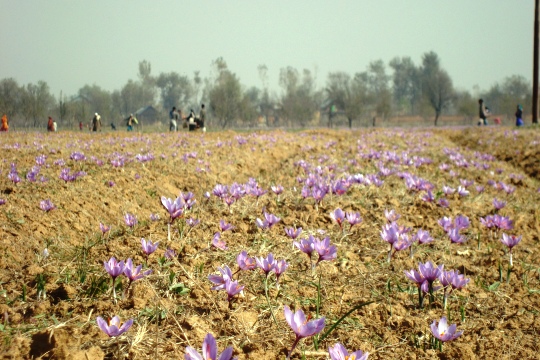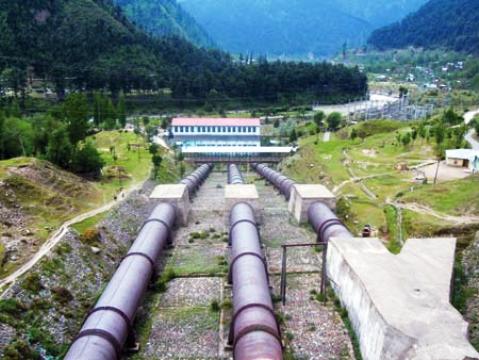
Cleopatra, the last pharaoh of Ancient Egypt (Late 69 BC – August 12, 30 BC) used saffron on her skin for getting golden colour and a romantic aroma. Aliya Bashir reports.
Europeans are believed to have been among the first to use saffron as a spice in their foods. Saffron is also used in religious ceremonies- Tibetan Monks use saffron for prayer and blessing. Calligraphers have used saffron to write religious books.
Kashmir is one of places where saffron is grown. Spain and Iran also produce saffron.
Saffron has been widely used for many centuries in industrial use, like in cosmetics, perfumes and facial creams, diary industry, alcohol industry and tobacco industry. It is considered as one of the oldest herbs ever used for medicinal purposes in the history of mankind.
The origin of saffron dates back to more than 3000 years and is mentioned in various historical documents found in the Mediterranean, Asian and European countries.
The Chinese historical documents of the 3rd century AD referred saffron to have a Kashmiri provenance. However, according to the Kashmiri legends, saffron was brought to the region by two Sufi ascetics, Khwaja Masood Wali and Hazrat Sheikh Shariffudin, during the 11th and 12th centuries AD. A golden-domed shrine and tomb dedicated to those Sufis can be found in the saffron growing village of Pampore.
Saffron (Crocus sativus), predominantly grows on the Karevas of Pampore area in district Pulwama. Pampore is known as ‘Golden Bowl’ of Kashmir,” as it produces large quantity of world’s most expensive spices.
For its colour, taste and aroma, saffron is used as an additive in various foods, desserts, and sweets to add colour and flavour to them. The rich aroma of saffron marks all celebrations in Kashmir, as the saffron Kehwa; a traditional beverage is a must on all occasions. No festivity is considered complete without it. Saffron is known as ‘Kong’ in local parlance and in Urdu as ‘Zaffran’ and in Hindi as ‘Kesar’.
According to experts at the agricultural department, the saffron grown in Pampore is of the “best quality”.
“The saffron of Pampore is believed to be of the best quality. The soil in the area is highly suitable for its cultivation. It grows best in low-density, well-watered and well-drained clay-calcareous soils with high organic content. The place is blessed by a saint several centuries ago which gives it a uniqueness over others,” says saffron trader Abdul Aziz.
Saffron grows in south Kashmir areas like Khrew, Ladhoo, Dussu, Lethpora, Sambora, Awantipora, Koil, Wanpora, parts of Wathora, Bogam, Chadora, Naagam, Chrari- Sharief, Konibal, Chandhar, Namblabal, Drangbal and Barsu.
Saffron is a small bulbous autumn-flowering perennial plant about a foot tall. “The flowers of saffron plant have divided, orange coloured stigmas, which along with the style-tops yield the saffron of commerce. The flavour, aroma, and colouring capability of the flower come from the red part of the stigma,” explains a scientist at the Sheri-Kashmir Agricultural University Science and Technology, Kashmir.
The plant starts to flower in October. The stigmas of the flower are dried, which form the most pure saffron. The number of saffron flowers and the time of blooming in any year are dependent upon the temperature prevalent in spring and autumn and on the amount of rainfall.
“The saffron fields remain dormant until mid-October when the bulbs germinate underneath the dry earth sprouting green shoots. In autumn (November) the bulbs bloom with purple flowers colouring the vast dull brown earth into bright purple. However, Kashmir has the advantage of quality,” the scholar says.
Saffron herb is the most valuable and expensive in the world and has also proved very useful in relieving the human body from several ailments with no traces of side effects.
“Saffron is used as medicinal plant with many therapeutic properties. It improves function of the nervous system and heart, and stimulates the appetite. It is also used to improve vision and memory,,” says Dr. Snobar Gul, a physician.













